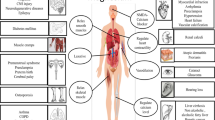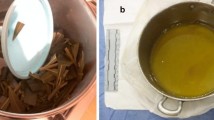Abstract
Unlike Naja naja, Bungarus caeruleus, Echis carinatus, and Daboia/Vipera russellii venoms, Ophiophagus hannah venom is medically ignored in the Indian subcontinent. Being the biggest poisonous snake, O. hannah has been presumed to inject several lethal doses of venom in a single bite. Lack of therapeutic antivenom to O. hannah bite in India makes any attempt to save the victim a difficult exercise. This study was initiated to compare O. hannah venom with the above said venoms for possible interference in hemostasis. Ophiophagus hannah venom was found to actively interfere in hemostatic stages such as fibrin clot formation, platelet activation/aggregation, and fibrin clot dissolution. It decreased partial thromboplastin time (aPTT), prothrombin time (PT), and thrombin clotting time (TCT). These activities are similar to that shown by E. carinatus and D. russellii venoms, and thus O. hannah venom was found to exert procoagulant activity through the common pathway of blood coagulation, while N. naja venom increased aPTT and TCT but not PT, and hence it was found to exert anticoagulant activity through the intrinsic pathway. Venoms of O. hannah, E. carinatus, and D. russellii lack plasminogen activation property as they do not hydrolyze azocasein, while they all show plasmin-like activity by degrading the fibrin clot. Although N. naja venom did not degrade azocasein, unlike other venoms, it showed feeble plasmin-like activity on fibrin clot. Venom of E. carinatus induced clotting of human platelet rich plasma (PRP), while the other three venoms interfered in agonist-induced platelet aggregation in PRP. Venom of O. hannah least inhibited the ADP induced platelet aggregation as compared to D. russellii and N. naja venoms. All these three venoms showed complete inhibition of epinephrine-induced aggregation at varied doses. However, O. hannah venom was unique in inhibiting thrombin induced aggregation.
Similar content being viewed by others
Abbreviations
- aPTT:
-
activated partial thromboplastin time
- PRP:
-
platelet rich plasma
- PT:
-
prothrombin time
- TCT:
-
thrombin clotting time
References
Chippaux, J. P. (1998) Bull WHO, 76, 515–524.
Brunda, G., and Sashidhar, R. B. (2007) Ind. J. Med. Res., 125, 661–668.
Lu, Q., Clemetson, J. M., and Clemetson, K. J. (2005) J. Thromb. Haemost., 3, 1791–1799.
Kamiguti, A. S., Zuzel, M., and Theakston, R. D. G. (1998) Braz. J. Med. Biol. Res., 31, 853–862.
Jagadeesha, D. K., Shashidhara Murthy, R., Girish, K. S., and Kemparaju, K. (2002) Toxicon, 40, 667–675.
Raghavendra Gowda, C. D., Nataraju, A., Rajesh, R., Dhananjaya, B. L., Sharath, B. K., and Vishwanath, B. S. (2006) Comp. Biochem. Physiol., 143, 295–302.
Mahadeswaraswamy, Y. H., Devaraja, S., Kumar, M. S., Gowtham, Y. N. J., and Kemparaju, K. (2009) Ind. J. Biochem. Biophys., 46, 154–160.
Kumar, M. S., Devaraj, V. R., Vishwanath, B. S., and Kemparaju, K. (2009) J. Thromb. Thrombolysis, 29, 340–348.
Jayanthi, G. P., and Gowda, T. V. (1990) Toxicon, 28, 65–74.
Prasad, B. N., Kemparaju, K., Bhatt, K. G., and Gowda, T. V. (1996) Toxicon, 34, 1173–1185.
Kemparaju, K., Krishnakanth, T. P., and Veerabasappa Gowda, T. (1999) Toxicon, 37, 1659–1671.
Rudrammaji, L. M., Machiah, K. D., Kantha, T. P., and Gowda, T. V. (2001) Mol. Cell. Biochem., 219, 39–44.
Satish, S., Tejaswini, J., Krishnakantha, T. P., and Gowda, T. V. (2004) Biochimie, 86, 203–210.
Gomes, A., and Pallabi, De. (1999) Biochem. Biophys. Res. Commun., 266, 488–491.
Laemmli, U. K. (1970) Nature, 227, 680–685.
Quick, A. J. (1935) J. Biol. Chem., 109, LXXiii–LXXiV.
Evans, H. J. (1981) Biochim. Biophys. Acta, 660, 219–226.
Gao, R., Zhang, Y., Meng, Q. X., Lee, W. H., Li, D. S., Xiong, Y. L., and Wang, W. Y. (1998) Toxicon, 36, 457–467.
Denis, C., Methia, N., and Frenette, P. S. (1998) Proc. Natl. Acad. Sci. USA, 95, 9524–9529.
Loria, G. D., Rucavado, A., and Kamiguti, A. S. (2003) Arch. Biochem. Biophys., 418, 13–24.
Gene, J. A., Roy, A., and Rojas, G. (1989) Toxicon, 27, 841–848.
Rajesh, R., Raghavendra Gowda, C. D., and Nataraju, A. (2005) Toxicon, 46, 84–92.
Chakrabarty, D., Datta, K., Gomes, A., and Bhattacharyya, D. (2000) Toxicon, 38, 1475–1490.
Born, G. V., and Cross, M. J. (1963) Nature, 197, 974–976.
Lowry, O. H., Rosenbrough, N. J., Farr, A. L., and Randall, R. J. (1951) J. Biol. Chem., 193, 265–275.
Mahadeswaraswamy, Y. H., Nagaraju, S., Girish, K. S., and Kemparaju, K. (2008) Phytother. Res., 22, 963–969.
Yamada, D., and Morita, T. (1999) Thromb. Res., 94, 221–226.
Gowda, D. C., Jackson, C. M., Hensley, P., and Davidson, E. A. (1994) J. Biol. Chem., 269, 10644–10650.
Nakayama, D., Ben Ammar, Y., and Takeda, S. (2009) Acta Crystallogr. Sect. F Struct. Biol. Cryst. Commun., 65, 1306–1308.
Lee, W. H., Zhang, Y., Wang, W. Y., Xiong, Y. L., and Gao, R. (1995) Toxicon, 33, 1263–1276.
Kornalik, F., and Blomback, B. (1975) Thromb. Res., 6, 57–63.
Mukherjee, A. K. (2008) Toxicon, 51, 923–933.
Kumar, M. S., Girish, K. S., Vishwanath, B. S., and Kemparaju, K. (2011) Ann. Hematol., 90, 569–577.
Sundell, I. B., Ranby, M., Zuzel, M., Robinson, K. A., and Theakston, R. D. G. (2003) Toxicon, 42, 239–247.
Jasti, J., Paramasivam, M., Srinivasan, A., and Singh, T. P. (2004) J. Mol. Biol., 335, 167–176.
Author information
Authors and Affiliations
Corresponding author
Additional information
Published in Russian in Biokhimiya, 2012, Vol. 77, No. 6, pp. 785–795.
Rights and permissions
About this article
Cite this article
Gowtham, Y.J., Kumar, M.S., Girish, K.S. et al. Hemostatic interference of Indian king cobra (Ophiophagus hannah) venom. Comparison with three other snake venoms of the subcontinent. Biochemistry Moscow 77, 639–647 (2012). https://doi.org/10.1134/S0006297912060119
Received:
Revised:
Published:
Issue Date:
DOI: https://doi.org/10.1134/S0006297912060119




